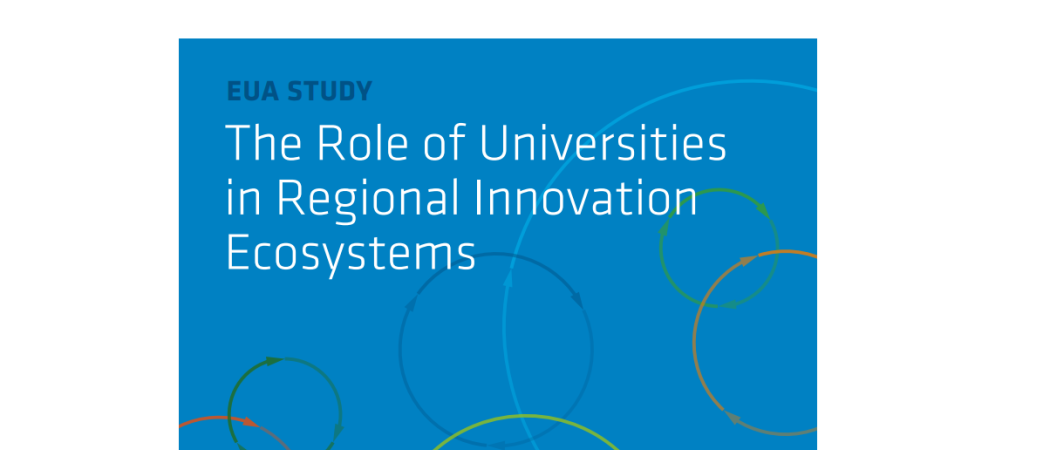
Universities are moving away from linear concepts of innovation to closer co-creative approaches with external partners, which help them take on a new central role in their innovation ecosystems.
A new EUA study focuses on the role of universities in these innovation ecosystems by analysing the nature and changing quality of the interactions between universities, companies, governmental agencies and other public organisations in nine different European regions.
The study shows how the paradigm shifts in innovation reflect a common quest of the triple helix partners for new forms and practices of connectivity. Innovation potential is mobilised through the diversity of perspectives and competences of the different partners. These new forms of connectivity seek coherence in three dimensions: social, organisational and spatial. These three dimensions are most easily aligned through the geographical proximity of regions. While universities, businesses and governmental agencies all need global pipelines to fuel their innovation processes, they exploit their potential most effectively (though not only) in their respective regions. They seek social, organisational and spatial coherence amongst regional partners that share cultural identity, history, vision, challenges and strategic priorities, and that can thus more easily benefit from each other’s complementary expertise.
This coherence is found in concrete connections between the various actors. Some of the connections are visible and well known, particularly when it comes to company managers and political and university leaders developing common visions and official strategies, or to researchers and company innovators conducting joint research centres. Other forms of connectivity unfold informally through personal networks at all levels that coordinate and align their ideas — from individual researchers to regional leaders. Moreover, the explicit and implicit cultures, norms, and narratives of a particular ecosystem provide the glue that makes its parts connect. Joint organisational forms and physical spaces, be it the joint lab, the innovation space or the student start-up hub, are the outcome.
In all case studies, changes are described as deeply transformational. These changes are a response to a new era in which having a wider impact and addressing global challenges have become a core motivation of students and young academics alike. The sense of multiple radical transformations, which make even the immediate future unforeseeable, creates a quest for ownership and for value-driven communities. Collaborative research, challenge-based learning projects and impact-oriented start-ups thus become the most important ingredients in the university’s role in regional innovation, and the very fabric of innovation ecosystems.
Read the full report.





 A unique international forum for public research organisations and companies to connect their external engagement with strategic interests around their R&D system.
A unique international forum for public research organisations and companies to connect their external engagement with strategic interests around their R&D system.